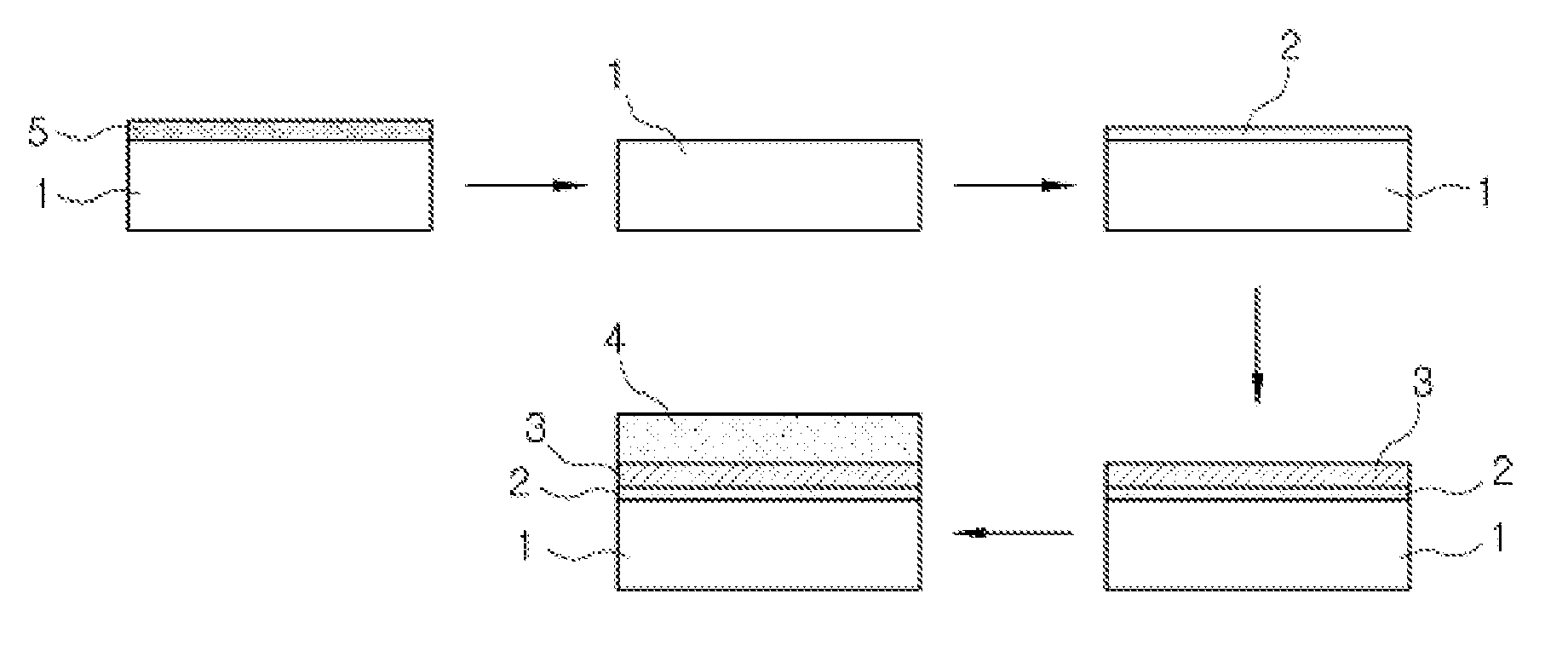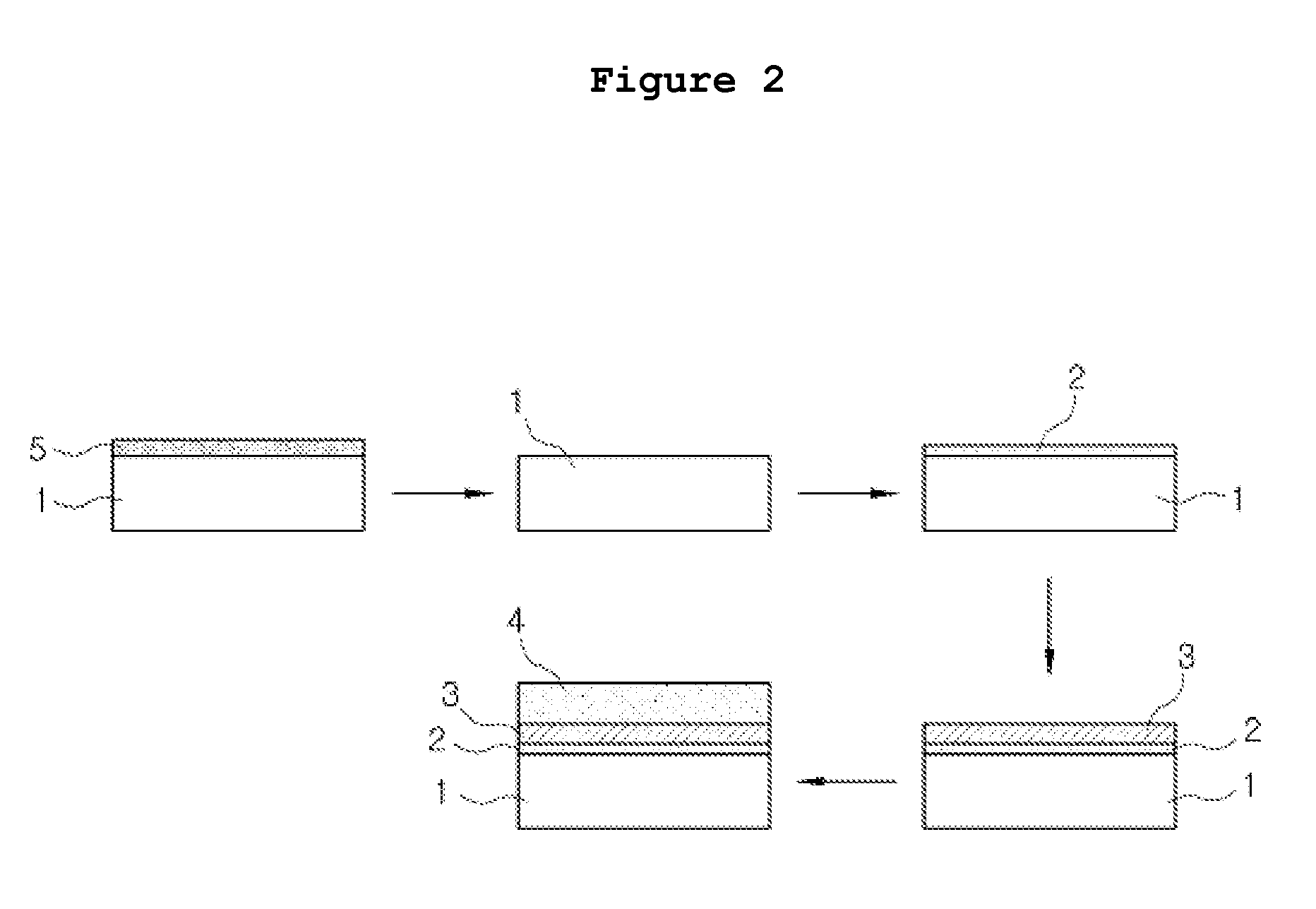Method of depositing nanolaminate film for non-volatile floating gate memory devices by atomic layer deposition
a technology of floating gate memory and nanolaminate film, which is applied in the direction of semiconductor devices, semiconductor/solid-state device details, electrical devices, etc., can solve the problems of difficult formation of uniform size and density over a large area, difficult to form a thin film with uniform size and density, and difficult to form a thin film than when using chemical vapor deposition
- Summary
- Abstract
- Description
- Claims
- Application Information
AI Technical Summary
Benefits of technology
Problems solved by technology
Method used
Image
Examples
example 1
[0061]FIG. 2 is a schematic diagram showing a process of depositing an Al2O3 / NiO / Al2O3 nanolaminate film according to the present invention. The nanolaminate film was deposited using the process sequence shown in FIG. 2.
[0062] Specifically, a silicon substrate to be deposited with an Al2O3 / NiO / Al2O3 film was washed sequentially with acetone, ethanol and deionized water, and then cleaned with an HF-containing cleaning solution to remove native oxides from the surface of the silicon substrate, followed by washing with deionized water. Then, the silicon substrate was placed in an atomic layer deposition reactor, which was vented with an evacuation pump, and the temperature of the substrate was controlled to 120° C.
[0063] Then, an Al2O3 layer was formed on the silicon substrate using trimethyl aluminum and water. Herein, the aluminum source and water were maintained at room temperature, and the formation of the Al2O3 layer was carried out in the following conditions: flow rate of purg...
example 2
[0067] Al2O3 / NiO / Al2O3 nanolaminate films were deposited in the same conditions as in Example 1, except that the thickness of the NiO layer was changed to 3 nm, 5 nm and 8 nm. Then, a 300-μm thick Al electrode was formed on each of the nanolaminate films. Memory window (threshold voltage shift) values at the NiO thicknesses were measured, and the measurement results are shown in FIG. 3. As can be seen from the results in FIG. 3, the memory window of the non-volatile floating gate memory device was large, even when the NiO thickness thereof was 3 nm. Also, there was little or no difference in memory window between NiO thicknesses of 5 nm and 8 nm, even though the memory window became larger with an increase in NiO thickness.
example 3
[0068] An Al2O3 / NiO / Al2O3 nanolaminate film deposited under the same conditions as in Example 1 was measured for memory window (threshold voltage shift) at varying sweep voltages, and the measurement results are shown in FIG. 4. As can be seen from the results in FIG. 4, the memory window became larger as the sweep voltage increased from ±2.5 V to ±5.0 V and ±7.0V.
[0069] From the results in FIGS. 3 and 4, it can be seen that the nanolaminate film according to the present invention has good memory window characteristics, such that it can be applied to non-volatile floating gate memory devices.
[0070] As described above, the inventive method of depositing a nanolaminate film of first high-dielectric-constant layer / nickel oxide layer / second high-dielectric-constant layer by atomic layer deposition has advantages in that it can be carried out at a lower temperature than the prior physical deposition method, and it is very easy to control thickness, even in the case of very thin films. ...
PUM
| Property | Measurement | Unit |
|---|---|---|
| temperature | aaaaa | aaaaa |
| temperature | aaaaa | aaaaa |
| dielectric constant | aaaaa | aaaaa |
Abstract
Description
Claims
Application Information
 Login to View More
Login to View More - R&D
- Intellectual Property
- Life Sciences
- Materials
- Tech Scout
- Unparalleled Data Quality
- Higher Quality Content
- 60% Fewer Hallucinations
Browse by: Latest US Patents, China's latest patents, Technical Efficacy Thesaurus, Application Domain, Technology Topic, Popular Technical Reports.
© 2025 PatSnap. All rights reserved.Legal|Privacy policy|Modern Slavery Act Transparency Statement|Sitemap|About US| Contact US: help@patsnap.com



